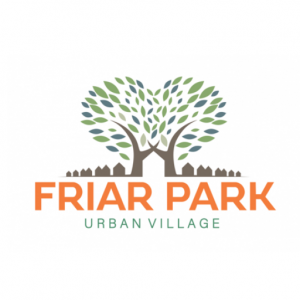Environment, Health and Wellbeing
The draft masterplan aims to deliver a livable, safe and healthy place that creates a positive use for the site and enhance the amenity of the surrounding area. The design proposals aim to support good mental health and active lifestyles for residents, as well as enhancing the environment to create a place that is resilient to climate change.
The following key principles are proposed within the draft masterplan and should be driven through the detailed design and delivery of the place.

Enhancing the environment
The northern edge of the site provides a buffer for the parkland from the adjacent railway and creates new wildlife habitat areas. To protect new habitats, the area would have limited public access. Alongside this ecological corridor is the main nature trail which runs the length of the site, and a wildlife pond will be located to the south-east of the site.
Safety and security
The masterplan seeks to reduce anti-social behaviour, crime and fear of crime. These existing issues have all been considered within the design of the draft masterplan. For example, the boundary with the Network Rail land has been designed to minimise public access and reduce the opportunity for fly tipping and antisocial behaviour. The banks of the bund would be densely planted to prevent access and a secure boundary provided at the top and bottom of the slope.
Limiting access to vehicles, the use of mature planting and strategically located landscape features aims to control movement within the site. These design measures, along with all common areas and routes through being overlooked by houses, seek to reduce opportunities for crime and anti-social activity to take place unnoticed.


Materials and planting
Protecting the environment, energy and water
Managing the changing climate and supporting sustainability in energy and water usage are central to the proposals in the draft masterplan. Increased tree coverage across the site would provide shelter during high heat and heavy rainfall. Trees and planting would be selected with watering in mind, to reduce water consumption where possible.
The design of streets and open spaces would incorporate natural drainage and developers would be encouraged to consider energy efficiency across all systems such as heating and lighting.
The orientation of new homes could provide the opportunity to use solar energy and add sustainable heating and cooling systems.
Developers would be encouraged to consider community energy saving measures and ways to increase awareness of how much energy the development is using and to foster community support for an overall reduction.


Health and wellbeing
The site will provide local access to nature and open space. The walking routes and play areas would promote activity to increase movement, exercise and promote wellbeing.
The improvements to safety and security aim to reduce the fear of crime and providing new streets and spaces free of street clutter has the potential to reduce stress and anxiety for users.
The masterplan supports diversity and inclusion within the space – bringing the community together in areas that has been designed for all. Some streets have been designed to minimise vehicle movements in favour of areas for play and interaction. Community growing areas are places where residents could come together socially and take joint responsibility for growing plants, fruits and vegetables.
Waste and site management
Robust materials would be used for paving, seating and planting to increase longevity and to reduce repair and maintenance requirements.
Recycling bins would be provided for all homes and opportunities could be sought to deliver a communal waste management system as part of the new community.




